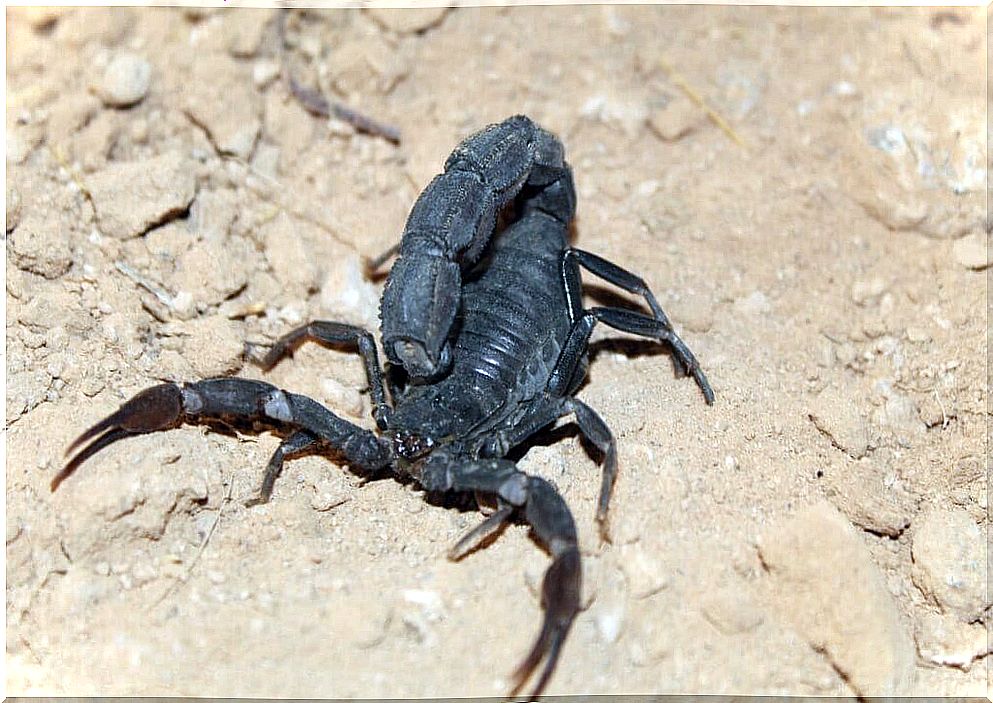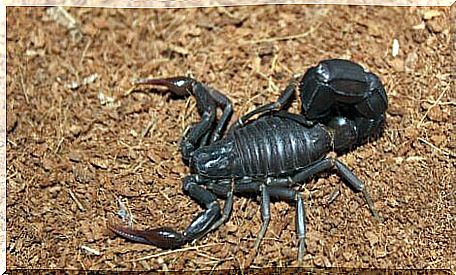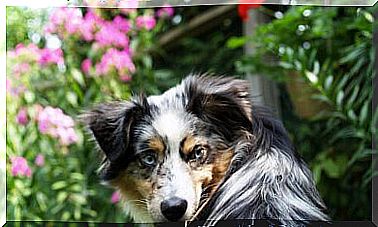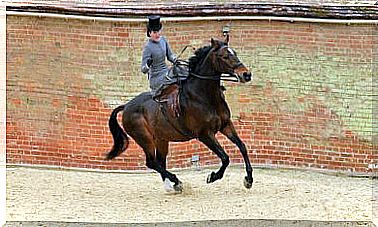The Bicolor Androctonus Scorpion: Habitat And Characteristics

The Androctonus bicolor scorpion is a chelicerate of the Buthidae family. These animals live in North and West Africa and the Middle East, but they support a relatively wide range of habitats as long as temperatures don’t get too cold. These arthropods are typical of arid and semiarid areas.
There are more than 1500 species of scorpions in the world, of which only about 25 are considered really dangerous to humans. The bicolor Androctonus occupies a dubious podium, it is one of the most poisonous scorpions of the earth. If you want to know everything about this lethal invertebrate, read on.
Characteristics of Androctonus bicolor
As we have said, this scorpion belongs to the Buthidae family . This grouping includes 96 genera and 1230 species of scorpions, making it the largest taxon within this group of arthropods. These animals are present in hot zones all over the Earth, with the exception of Antarctica and New Zealand.
About 20 species of scorpions are known to be lethal to humans and, interestingly, only one of them is outside the Buthidae family . These scorpions live in arid regions where food is scarce, so they cannot allow their prey to escape under any circumstances. For this reason, its poison has deadly properties.
The species Androctonus bicolor is a completely black scorpion that can measure up to 9 centimeters in length. Its build is more robust – more so than most scorpions – and it can be distinguished from other species by the unusual thickness of its tail and stinger. Its claws (pedipalps) are thin and end in brownish tones.

Habitat and behavior
This scorpion inhabits arid and semi-arid areas of Africa and the Middle East. They are invertebrates that can be located in environments with temperatures ranging from 30° C to 35° C during the day, as this is the thermal range in which they grow and develop more effectively. Remember that they are ectothermic animals and therefore cannot generate heat.
With regard to water demand, these arthropods do not tolerate a relative humidity above 50% well. Scorpions of this species live on the outskirts of desert areas and in places with sandy soil, where they can burrow and exposure to water is very limited. Therefore, they get all the fluid they need from their prey.
These scorpions feed on various types of insects, small vertebrates and even other scorpions. Like many other arachnids, they can go several months without eating, as their metabolic rate is extremely low and they come out of their burrows just enough.
With their venom, these invertebrates paralyze prey and kill them quickly. As they can only digest liquids, they break the animal’s solid segments with their chelicerae and feed on its internal liquids. As we’ve already said, its venom is one of the most powerful on Earth, at least within the Scorpiones order .
The venom of Androctonus bicolor : one of the most lethal
A. bicolor is one of the most venomous scorpions on the planet, but interestingly, until now, very little was known about the composition of its toxins. Studies published in the Journal of proteomics attempt to elucidate what makes this animal’s venom so special. Among his discoveries, we highlight the following:
- 103 new poisonous peptides were discovered in this species. They are made up of short sequences of amino acids, like proteins. Some of them are similar to NaTx, KTx and CaTx.
- Only 3 of the peptides identified in this scorpion are also present in the analyzed venom of other scorpions.
- These peptides are neurotoxic, that is, they act on the Central Nervous System (CNS) of the vertebrate that receives the bite. This causes lethal nerve palsy, as adequate breathing is ultimately impeded and the patient dies of respiratory failure.
Furthermore, this poison has properties to unbalance organic homeostasis. The bite causes hypomagnesemia – a lack of magnesium – in the body, which in turn results in an excessively high concentration of potassium in the blood. This causes nausea, irregular breathing, muscle weakness and numbness, among other symptoms.

As you’ve seen, we’re talking about a scorpion that it’s best to keep your distance from. The bicolor Androctonus is a fascinating and intense colors hunter, but best enjoyed a few meters of safety.









